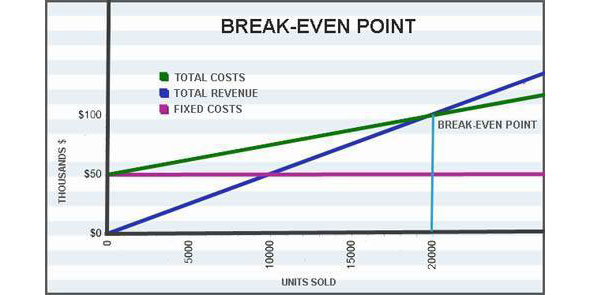In the complex landscape of income taxation, it's essential for businesses and individuals alike to have a thorough understanding of various tax provisions to ensure compliance and optimize financial strategies. Section 250 of the Income Tax Act is one such provision that plays a crucial role in determining the tax liability of businesses operating in a globalized economy. In this comprehensive guide, we will delve into the intricacies of Section 250, exploring its key components, implications, and practical applications.
Understanding Section 250:
Section 250 of the Income Tax Act primarily deals with the concept of Global Intangible Low-Taxed Income (GILTI). Enacted to prevent the erosion of the U.S. tax base, GILTI is a provision that requires U.S. shareholders of controlled foreign corporations (CFCs) to include their share of the CFC's income in their taxable income, even if the income is not distributed.
Key Components:
- Controlled Foreign Corporations (CFCs): Under Section 250, a CFC is any foreign corporation in which U.S. shareholders own more than 50% of the total combined voting power or value of its stock.
- Global Intangible Low-Taxed Income (GILTI): GILTI is defined as the excess of a U.S. shareholder's net CFC tested income over a deemed return on the tangible assets of the CFC.
- Deemed Intangible Income (DII): DII represents a deemed return on the tangible assets of a CFC. It is calculated at a fixed rate of 10%, providing a baseline return on tangible assets.
- Foreign-Derived Intangible Income (FDII): While not directly related to Section 250, FDII is worth mentioning in the context of GILTI. FDII is a deduction available to U.S. corporations for income derived from exporting goods, services, or property to foreign markets.
Implications for U.S. Shareholders:

U.S. shareholders must carefully evaluate their investments in foreign corporations to assess the impact of GILTI on their overall tax liability. The inclusion of GILTI in taxable income can result in additional tax burdens, making it essential for shareholders to implement tax planning strategies.
Impact of GILTI on Tax Liabilities:
- GILTI Inclusion Amount: The GILTI inclusion amount is the amount of a U.S. shareholder's net CFC tested income that must be included in their taxable income.
- Foreign Tax Credit (FTC): To avoid double taxation, U.S. shareholders can claim an FTC for foreign taxes paid on GILTI inclusion amounts.
- Tax Rate on GILTI Inclusion Amount: The tax rate applied to the GILTI inclusion amount is determined by the shareholder's overall effective tax rate, which takes into account various deductions and credits.
- Section 250 Deduction: To mitigate the impact of GILTI, U.S. shareholders can claim a deduction equal to 50% of their GILTI inclusion amount.
Strategic Tax Planning for U.S. Shareholders:
To minimize the impact of GILTI on their tax liabilities, U.S. shareholders can consider implementing the following tax planning strategies:
- Restructuring Foreign Operations: Shareholders can potentially reduce their GILTI inclusion amount by restructuring their foreign operations to decrease tangible assets and increase intangible assets.
- Use of Hybrid Structures: Utilizing hybrid structures, such as check-the-box elections, can help mitigate the impact of GILTI by reducing a shareholder's CFC ownership percentage.
- Maximizing FDII Deduction: By maximizing their FDII deduction, U.S. shareholders can reduce their overall tax liability and offset the effects of GILTI inclusion amounts.
- Consideration of Other Tax Provisions: It's essential for U.S. shareholders to consider how other tax provisions, such as the Base Erosion and Anti-Abuse Tax (BEAT), may interact with GILTI and impact their tax liability.
Compliance and Reporting Obligations:
U.S. shareholders should also be mindful of their compliance and reporting responsibilities under Section 250. These obligations encompass filing Form 5471 to disclose ownership in CFCs and determining the GILTI inclusion amount for each CFC.
Navigating the Intricacies of Foreign Tax Credits:
Given that GILTI inclusion amounts are influenced by foreign taxes, it is of utmost importance for U.S. shareholders to possess a comprehensive comprehension of the consequences associated with claiming FTCs in relation to GILTI and other taxable income. Skillfully navigating the intricacies of foreign tax credits necessitates meticulous planning and thoughtful deliberation.
Assessing the Role of QBAI in Tax Calculations:
Qualified Business Asset Investment (QBAI) constitutes another factor that serves to determine the GILTI inclusion amount. QBAI is defined as the sum of a CFC's tangible assets used in its trade or business that are depreciable for tax purposes.
Practical Applications:
- Tax Planning: To mitigate the impact of GILTI, businesses can explore various tax planning strategies, such as adjusting the mix of tangible and intangible assets, considering entity restructuring, and optimizing the use of foreign tax credits.
- Compliance and Reporting: Due to the complexity of Section 250, compliance and accurate reporting are paramount. U.S. shareholders must stay informed about the latest regulatory developments, ensure proper documentation, and seek professional advice to navigate the intricate tax landscape.
Advanced Considerations:

Beyond the basics, there are advanced considerations and nuances that U.S. shareholders and tax professionals should be aware of when dealing with Section 250:
- Qualified Business Asset Investment (QBAI): QBAI is a crucial factor in the GILTI calculation. It includes the average aggregate adjusted bases of specified tangible property used in the production of tested income. Understanding how QBAI impacts the GILTI inclusion amount is vital for accurate tax planning.
- Foreign Tax Credits (FTCs): U.S. shareholders facing GILTI inclusion may utilize foreign tax credits to offset the U.S. tax liability. However, the interaction between GILTI and FTCs is intricate, and careful planning is necessary to optimize the use of available credits.
- Impact on Different Industries: The impact of Section 250 can vary across industries. Companies with significant intangible assets or those heavily involved in global transactions need to carefully analyze their structures to minimize adverse tax consequences.
- Changing Regulatory Landscape: Tax laws are subject to change, and staying abreast of any modifications to Section 250 is crucial for effective tax planning. Legislative updates or regulatory changes can significantly influence the interpretation and application of GILTI provisions.
Conclusion:
Section 250 of the Income Tax Act, focusing on Global Intangible Low-Taxed Income, is a critical component of the U.S. tax framework. U.S. shareholders of controlled foreign corporations must be diligent in understanding the implications of GILTI on their tax obligations and implement strategic measures to optimize their financial positions. With the right knowledge and proactive approach, businesses can navigate the complexities of Section 250 and ensure compliance in an ever-evolving global economy.




